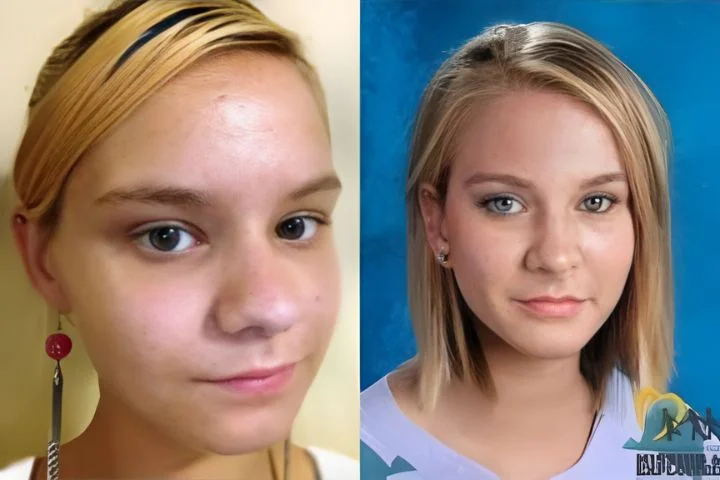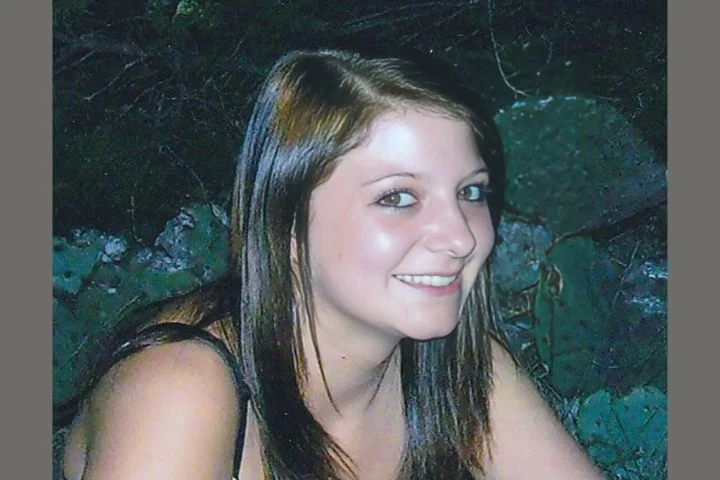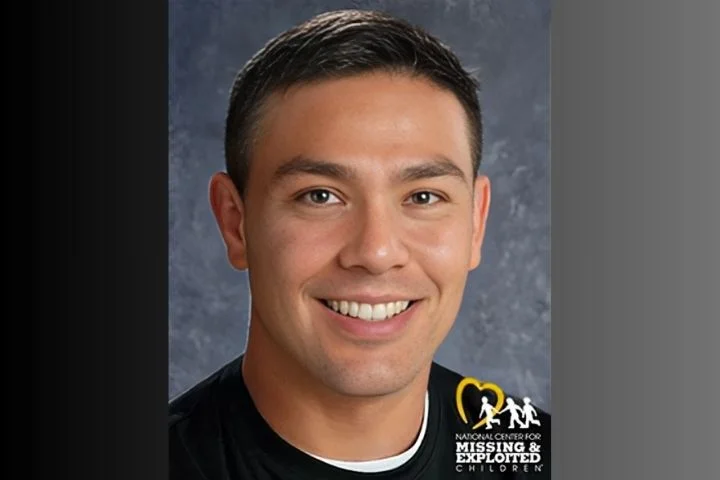Sheree Magaro listened to the weather forecast with growing trepidation on the evening of Sunday, February 22, 1987. She had spent the weekend at her boyfriend’s house in Kennedyville, Maryland and had originally planned to return to her home in Harrisburg, Pennsylvania on Monday morning. A fast-moving snowstorm was now predicted to reach the Maryland area that night, and Sheree worried that she would get stranded there if she didn’t leave for home soon. At 9:45 pm, she kissed her boyfriend goodbye and climbed into her Ford Torino to make the two-hour drive back to Harrisburg. She would never make it home, and she was never seen again.
Maryland State Troopers received a phone call at 9:00 am the following morning telling them there was a car located in a cornfield about a mile away from the Bohemia River Bridge. The male caller didn’t give his name, and hung up without waiting for a response; the call was too short to be traced.
Troopers located the car, which belonged to Sheree, at 9:45 am. It had been abandoned in a cornfield about 15 miles away from where Sheree was last seen. Although a total of 18 inches of snow had fallen overnight, there was only about an inch of snow found underneath the car; the car had likely been left in the field around 10:30 pm the previous night.
When police looked inside the car, it was instantly clear that something horrific had happened to Sheree. There was blood, hair, and what appeared to be brain matter splattered throughout the car; the amount of blood found indicated that detectives were dealing with a homicide. Part of the backseat was scorched, as if someone had tried to set the car on fire to cover up the crime but couldn’t get it to fully ignite.
The ground surrounding the car was littered with bloody clothing, but there was no blood found anywhere in the field where the car was left. Detectives determined that Sheree’s body had already been removed from the car by the time it was abandoned; if someone had taken her out of the car there, much more blood would have been found on the ground. This meant there was likely another crime scene; unfortunately it was never identified.
About 100 yards away from the car, some of Sheree’s personal belongings were found, including her purse and a tube of lipstick. Her wallet was missing, but investigators did not believe that robbery had been the primary motive in her abduction and presumed mu*rder; several items of expensive jewelry were found untouched inside her car.
Sheree’s parents were notified about the discovery; they were horrified to learn that Sheree was missing and appeared to be the victim of a violent crime. They told investigators that the 30-year-old had no enemies that they were aware of and had never indicated that she was afraid of anyone. They couldn’t imagine who would want to harm her.
Divorced since 1985, Sheree had a 4-year-old son who would often accompany her on her weekend trips to Maryland. On this particular weekend, however, he had stayed in Lebanon, Pennsylvania with Sheree’s parents. Sheree planned to pick him up from there Monday evening when she got done work.
Sheree was an executive secretary at Data Control, a company that operated lotteries in several different states, including Pennsylvania and Delaware. She had met Frank through work; he was employed by the Delaware Lottery Commission. They had been dating since shortly after Sheree’s divorce and spent nearly every weekend together.
Although the couple would sometimes stay at Sheree’s home in Harrisburg, she preferred making the drive to Maryland because she loved the Eastern Shore area. She told her boss that she especially liked how safe the area was, telling him that no one there even bothered to lock their doors.
Sheree called her mother Sunday afternoon from Frank’s house to tell her some exciting news: she and Frank had decided to get married. She planned to sell her home in Harrisburg and move in with him. Her mother was thrilled for her, and Sheree promised to tell her more about her plans when she saw her the next day. She had sounded only marginally concerned about the impending snowstorm at the time, and her mother assumed that she would make the drive home Monday morning as usual. Sheree later changed her mind and told her mother she would be driving back that night. Her mother begged her to spend the night in Maryland, but she was determined to leave before the snow started.
Frank told detectives that Sheree had grown increasingly concerned about the weather and was afraid that she would be forced to miss work the following day if she didn’t leave Maryland before the storm hit. He didn’t want her to make the drive so late at night and had tried to convince her to stay, but her mind was made up. He gave her $20 so she could fill up her gas tank and told her to call him as soon as she got home.
Detectives were unable to confirm if Sheree stopped for gas before she went missing; her car had seven gallons of gas in the tank when it was found. There was no way of knowing how much gas she had when she left Frank’s house. It was possible that she went to a gas station with the intention of filling the tank, but met her abductor before she could do so.
Investigators interviewed both Frank and Sheree’s ex-husband, Michael Magaro, on numerous occasions, but eventually determined that neither man had anything to do with her disappearance. They believed that Sheree had stopped to help someone who was stranded on the road, and the encounter then turned violent and she was ultimately ki*lled. It was also possible that she had been tricked into pulling over by someone impersonating a police officer.
Detectives were confident that the ki*ller had disposed of her body prior to abandoning the car; given the fact that the car had likely been left in the field by 10:30 pm, they were certain that her body had to be somewhere close by.
A massive search for Sheree was launched on Monday; hundreds of police officers, firefighters, and volunteers scoured the fields and woods near where the car had been found, looking for any clues that might lead them to Sheree. The deep snow made the search especially difficult, and only one piece of potential evidence — a man’s blood-stained plaid shirt — was found. The shirt had been discarded along the side of Route 213 a couple of miles from where the car was found; tests would later confirm that the blood on the shirt belonged to Sheree. A Delaware State Police helicopter was brought in to scan the area from above, but no further evidence was found.
While the search was taking place, detectives visited each home in the area to determine if any of the residents had seen anything unusual Sunday night. The snow had kept most people inside, but several residents reported seeing a Ford Mustang with Maryland license plates parked alongside Route 213 that night around 10:00 pm.
The driver of the Mustang was described as a white male in his mid to late twenties, approximately 5 feet 10 inches tall and 170 pounds, with brown eyes, dark brown hair, and a mustache. The Mustang appeared to be a late 70s or early 80s model and had apparently broken down; the driver had turned on his hazard lights and was seen standing next to the car.
The car was still on the side of the road at 1:30 am when a state trooper drove by on routine patrol; the trooper stopped to see if the driver needed assistance but the car was empty and he noticed nothing unusual inside it. Police refrained from calling the man a suspect, but believed he could have seen something that might be useful to the investigation; unfortunately, they were unsuccessful in identifying him.
On Tuesday, police received a call from an employee of a Sears store in Bel Air, Maryland, about 45 miles away from where Sheree’s car had been found. The employee reported that a white male had attempted to purchase a color television Monday morning using a credit card belonging to Sheree. The transaction stood out because the man had claimed that he was employed at the Aberdeen Proving Ground and was in a hurry because he needed to be to work by noon. He told the clerk he had recently gotten married and the credit card belonged to his wife. The transaction couldn’t be completed because Sheree’s card was maxed out; once he realized this, the man left in a rush, leaving the credit card with the sales clerk.
The clerk hadn’t paid much attention to the man at the time, but heard about Sheree’s apparent murder on the news that night. Although they were not able to obtain any useful fingerprints from the credit card, the clerk was able to provide police with a detailed description of the man. He looked like he was in his twenties, and was about 5 feet 9 inches tall and 160 pounds. He had blue or green eyes, a dark complexion, and short black hair.
Detectives noted that the man described by the clerk was similar in appearance to the man residents of the area described seeing on Sunday night. Although they couldn’t be sure that the man in Sears had been Sheree’s ki*ller, the fact that he was attempting to use one of her credit cards within hours of her disappearance made him a prime suspect.
That Wednesday, an anonymous male called several newspapers and television stations in the Baltimore area and claimed that police were wasting their time searching for Sheree’s body. He insisted that Sheree was still alive and could be found in La Plata, Maryland; he claimed that she had burned her own car as part of an insurance scam. Detectives were unable to determine where the calls had come from; it’s unclear if the man was the k*iller or simply someone calling as a hoax.
As the week went on without any evidence pointing to Sheree’s location, the search was expanded to include the Bohemia River. Maryland State Police divers, aided by a dragging team, spent hours in the water but found nothing to suggest that Sheree’s body had been thrown into the river. Several small creeks in the area were also searched for evidence, but nothing was found.
A month after Sheree went missing, detectives said that they were certain they were dealing with a homicide but had made little progress in identifying any suspects or locating Sheree’s body. Her friends and family offered a $20,000 reward for information leading to her recovery. A few tips came in, but none of them led to any new developments in the case.
Only one additional piece of evidence ever surfaced in the case; on May 4, 1987, a clean-up crew from a local detention center was picking up trash along Route 213 when they located Sheree’s J.C. Penney’s credit card. It was leaning up against a stop sign approximately eight miles away from the cornfield where her car had been found. Investigators were unable to find any useable prints on it; it’s unknown how the card got to that location or how long it had been sitting there.
On May 11, 1989, a judge declared Sheree legally dead. Although a person usually needed to be missing for seven or more years before they could be declared dead, the judge believed that there was ample evidence showing that Sheree had been the victim of a homicide.
Sheree’s family struggled to deal with their loss, and noted that it was perhaps hardest on her young son. Her mother, Mary Youtz, stated that the family was more concerned with finding Sheree than catching the ki*ller. While nothing will ease the pain of losing her, they would like to be able to give her a proper burial. Mary eventually decided that she was going to purchase a burial plot and headstone so that the family would have a place to go to grieve. More than anything, she wanted people to remember Sheree, and felt that having a grave for her would ensure that she wouldn’t be forgotten.
Sheree’s case has been cold for years, and it seems unlikely that it will be solved. There is scant evidence to aid police in their hunt for her kil*ler; the only forensic evidence obtained from the car was Sheree’s blood and a bloody partial fingerprint and palm print. Since Sheree was never fingerprinted, police can’t rule out the possibility that the print is her own. Still, it could prove useful if a suspect is ever identified.
Sheree Magaro was 30 years old when she went missing in 1987, and police are certain that she was the victim of a homicide though her body has never been found. They have released sketches of two men they would like to question in the case, but have never named any suspects. If you have any information about Sheree, please contact the Maryland State Police at 410–290–0500.






